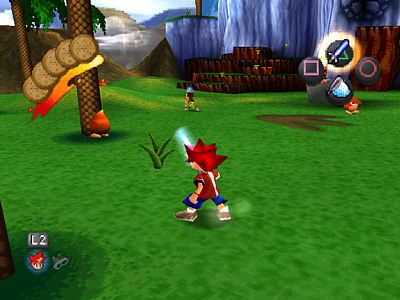
Ape Escape (1999 - PS1) 
Imagine Super Mario 64 if the stars you collect could run away and/or fight back, and you had to use an array of goofy gadgets, each with its own control scheme, to catch them, and you've basically got Ape Escape.
Despite hearing some claims that Ape Escape is a 3D platform game for those who don't typically like them, I don't really think, aside from the gadgets, that it's all that different from others in the genre. The controls and camera, like many of these games, are awkward and take time to adjust to. (And why do swimming controls in 3D games pretty much always suck??) Much of the game, including the bosses, is generally easy. It does have a few brutal segments (that oil can jumping part in the City Park stage) that'll give your thumbs and patience a real workout, but often it likes to hold your hand through the hardest parts. Mailboxes are usually stationed near tough situations that tell you exactly what you need to do, and most bosses have infinite life refills nearby.
The music was as bad as the Shyguy Toybox theme in Paper Mario, only instead of being like that for just one area, it's like that for the entire game. I eventually had to go into the options and turn it off. The graphics are bright and colorful, though they do have that "wobbly" sort of look, as though you're viewing the screen through a fishbowl, that a lot of 3D Playstation games have.
And man, I can't remember the last time I played a game in which I sided way more with the villain than the hero. He's an albino monkey who becomes a criminal genius after donning a intelligence-boosting helmet invented by the game's stock scientist character. But man, he makes a much better case for himself than the people who want him to just take the helmet off and lose all his new identity. And when he's captured in a net like any ordinary monkey, I felt my soul fall into my feet.
Though the innovation of the gadgets, the vast and varied environments, and the challenge of figuring out how to capture the harder primates all make Ape Escape a worthy addition to its genre, it's not quite up there with the kings, Super Mario 64 and Banjo-Kazooie, or even, as far as 3D Playstation games go, Crash Bandicoot and Alundra 2. But I did have a lot of fun with it and can easily recommend it if you already have a Playstation or PS2 and find it for a low enough price. (Not recommended emulated, though, unless you can figure out how to get the camera to work better than I could.)
Final note: I did get all the monkeys and all the coins, but I didn't bother to get 100% since that requires beating the time trials. Catching some of those monkeys, especially those "survivalist" ones with all the rockets and machine guns in their pants, was difficult enough the first time. Doing it over and over again in a time limit would make me want to strangle somebody.
Rating: 3.5/5
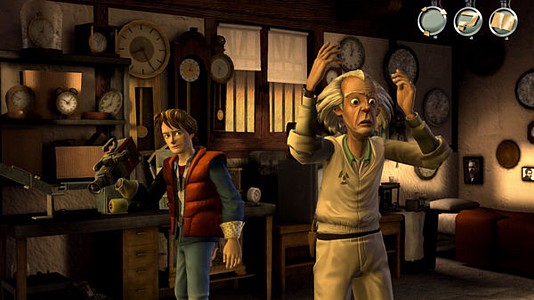
Back to the Future: The Game (2010 - PC) 
A five-chapter sequel to the Back to the Future trilogy of movies is brought to life in a point-and-click PC adventure game. Games based on movies have notoriously bad reputations, but this is not a bad game - it's just a very casual one. It's not recommended for anyone who hasn't seen the movies, it's strictly for the fans. Anyone expecting a hardcore challenge like the Lucasarts or Sierra adventure games will be disappointed. Most situations are solved simply by (eventually) picking the right choices of dialogue, though there is some light puzzle-solving and using items in your inventory. Like many modern casual adventure games, hints are provided, though I try my best to restrict my own use of them.
The plot, characters, and settings are pretty faithful to the movies. Though it does get a bit silly at times (and confusing, due to multiple trips through time causing the timeline to periodically change and unravel), it's not worse than anything in Back to the Future 2, which is the one movie in the trilogy I really don't like very much, or the flying train at the end of Part 3. The game mainly deals with two periods of Hill Valley's history we've never seen before: the early 1930s Prohibition era, and a 1984-style dystopian future. Although this is fine for this game, I hope if any more sequels are ever produced, Doc and Marty can maybe explore a time period unrelated to their own family history and Hill Valley in general.
Speaking of Doc and Marty, it's pretty darn cool that Telltale Games actually managed to get Christopher Lloyd to voice his role for this game, though it might explain why he's used a bit sparingly. Much of the game features young Emmett Brown, who is voiced by someone else, instead, though it does give us a funny and interesting look at his past that's never been touched on in any of the movies. Marty (as well as the other returning characters) is performed by a dead-on impressionist, but there is a cameo from Michael J. Fox in the final chapter - another major perk for the fans.
Though the game is easy, some situations can be surprisingly tense and exciting, particularly the chapter-ending scenarios in which Marty finds himself clamboring about the outside of a moving vehicle. It's thanks in part to the wonderful scripting, intense orchestral score based on Alan Silvestri's work from the films, and all the little references for fans to chow down on - yes, Marty's pink "Barbie" hoverboard and oversized guitar amplifier make an appearance.
So, don't play this game because you want a challenge, play it because you'd like an entertaining alternative to waiting around forever for another movie sequel. If you feel the $24.99 price tag it typically carries is too high, it tends to go on sale every so often at Steam and GOG for around $5, so check back during the holidays.
Rating: 3.5/5
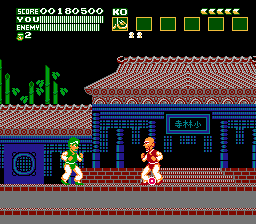
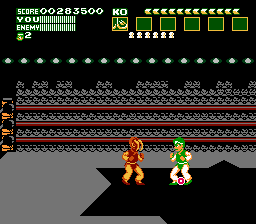
Flying Dragon: The Secret Scroll (NES - 1989) 
Beating this game was a milestone for me. I loved Culture Brain's Magic of Scheherazade and Little Ninja Brothers NES games, but I was never able to get into the Hiryu No Ken series, despite being a fan of their soundtracks for years. So, I'm glad I was finally able to finish one of them, and in this case, I finished both quests of the Normal and Professional difficulty levels, though there wasn't much difference between them.
Flying Dragon is definitely a "gamer's game". It's a bit demanding of the player to learn its mechanics. Anyone going into it expecting it to be as immediately accessible as Street Fighter II or any similar fighting game might be disappointed, and the game's stubbornness about when you can perform moves and how is an annoyance you have to accept. You see, it's really a disguised RPG. The one-on-one fighting is actually turn-based, and you can only make a move when a circle or star appears on the screen. Depending on where it appears, you either have to attack your opponent or defend. The CPU on the harder enemies is fast and some have dirty tricks up their sleeves, incuding special opponents who transform into "Tusk Soldiers" when certain conditions are met. These guys need to be revealed and beaten to get the best ending. However, your character has an arsenal of special moves, including the all-powerful "Hiryu No Ken" (a flying spin kick), that can be performed once its meter is maxed out.
Though it takes some time to get the hang of it, once you do, there's generally nothing you won't be able to handle. It's definitely worth a try if you want to something quirky and different that throws the rules of fighting games and RPGs into a blender and hits the puree button. And it has a decent soundtrack on top of that. The graphics aren't the best, but at least the character art is acceptable and those Tusk Soldiers are the weirdest-looking things I've seen in a long time.
Rating: 3.5/5



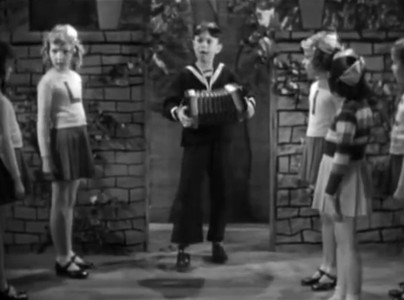
Best of Our Gang Comedies (1930/1937 - Streaming Video)
You can probably guess what I'm going to say here, but I'll say it anyway: If this is the best of the Our Gang (aka The Little Rascals) shorts, then I'd really hate to see the worst. This compilation only includes two episodes: "Our Gang Follies of 1938" and "School's Out". Sometimes, I think adults really overestimate the degree to which people want to see little kids singing and dancing. Yes, maybe it's impressive that you could get kids to perform in such a big production. No, that doesn't necessarily make it entertaining. "School's Out" was marginally funnier, and had no singing or dancing, but when the source of the jokes the kids were telling in the classroom turned out to be a "Minstrel Joke Book", I didn't know whether to be offended or roll my eyes.
I had real difficulty telling if some characters were supposed to be girls or boys. The actors looked like boys, but were dressed like girls and had ambiguous names like "Farina". I'm not even sure the people in charge of making these things knew what they were, as Wikipedia tells me that Buckwheat started out as a female character, despite being played by a boy, but eventually became a male character. And Farina was so confusing, that apparently he/she alternated genders quite frequently - even sometimes in the same film. Maybe it's not the biggest deal in the world, but it was distracting, and it's not like I was given much else to think about.
Rating: 1.5/5
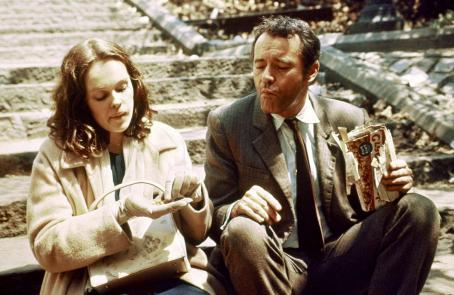
The Out-of-Towners (1970 - Streaming Video)
"The problem is not the problem. The problem is your attitude about the problem." - Coach Brevin, The Sisterhood of the Traveling Pants
Jack Lemmon's character in this movie is a posterchild for that statement. He has a big job interview in New York and flies from Ohio to try to get there in time for it. Things go wrong, he ends up in Boston instead, and he has to find a way back to New York. At first, I could understand him being upset and could sympathize with him a little, but it eventually got to the point that so many bad things were happening that not only were the plot contrivances starting to annoy me, but he annoyed me when he wouldn't consider making the best out of a bad situation and take the hotel's offer to stay in the lobby until his room was ready. So, he ends up in increasingly worse situations just because he wanted to prove a point.
I can imagine this sounding funny on paper, but the worst part is that I just didn't laugh once. It reminds me of Don Knotts in How to Frame a Figg in that Lemmon is spazzing out so much, I don't find it funny. I just feel uncomfortable being trapped with this aggravating character for two hours. Not to mention that the house he leaves in Ohio is a friggin' mansion, so why should I care if a rich person doesn't get a job to make him even richer?
The only bright spot is a surprising cameo from Billy Dee Williams, ten years before he would become better known as Lando Calrissian in The Empire Strikes Back. He makes it onto Lemmon's list of people he's going to sue later, which also includes just about every other character in the whole movie. It's a constant running gag that the movie keeps pulling out of its pocket, even when it wasn't funny to begin with, all the way on up until the ending that not only seems rather unrealistic, but if the joke was on the main characters all along (rich people trying to become richer get what they deserve), it suddenly takes their side - meaning Lemmon has learned nothing from his experiences, and I sat through a 2-hour unfunny slog for nothing.
Rating: 1.5/5



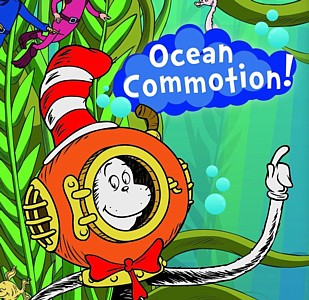
The Cat in the Hat Knows a Lot About That! Ocean Commotion! (2011 - Streaming Video)
There's definitely a problem when you come away from viewing a kid's program and your dominant thought is, "I'm glad I'm not a kid growing up now", and/or, "I'm glad I don't have kids so I don't have to ever sit through dreck like this again".
Here's the thing: Animals and nature are interesting enough on their own without having to make them into cartoon characters. If I were making a show like this, I would just show footage of real animals and have the Cat in the Hat narrate as an added hook. Isn't it better to see real seahorses and polar bears than poorly drawn, badly animated ones with really annoying voices?
I see that this series has won some awards from somewhere for something-or-other. I'm guessing that's because it's "Oh So Educational!" and not taking into account that: It's really boring. It reuses animation sequences to fill time in every episode. It has some of the most embarrassing songs since Johnny Storm took to the mic in that 90s Fantastic Four cartoon. Everyone shouts their lines in a seeming attempt to upstage Martin Short, who voices the Cat. Every episode is formulaic and there is no added layer for adults to appreciate. The writing does not seem to be much in the spirit of Dr. Seuss. (Wasn't sure about that last one since I never had his books when I was a kid, but the comments at TV.com confirm it.)
Also, you know, I get the idea of "themed" video compilations, but five episodes in a row about the ocean made me want to throw myself off a cliff into the briny deep.
Rating: 1/5
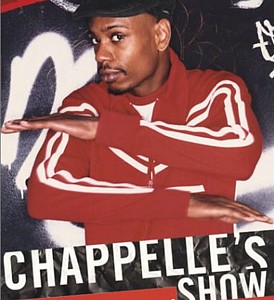
Chappelle's Show Season One Uncensored! (DVD - 2003) 
I have no idea how this show ever aired on television. Even with a TV-14 rating, being on cable, and censored, they must've been bleeping it constantly. The show's brute force method is to be as offensive and politically incorrect as possible in hopes that the sheer absurdity of the stereotypes it plays off of will get laughs instead of complaints. And if it did get complaints? Dave Chappelle is the kind of guy that when accused of being "juvenile", responded by having a choir sing the "Diarrhea Song". Since the DVD is uncensored, that TV-14 rating no longer applies. This is strictly entertainment for adults.
Many of the sketches are funny (real life Grand Theft Auto; the Blind Supremacist; the R. Kelly remix; The Matrix parody), but like most sketch comedies I've seen, it's often hit or miss. It also felt like, this being the first season, the show hadn't quite hit its stride yet. That, and I get the distinct feeling that some of the sketches were making fun of very specific things that were around at the time it was made, and I have no idea now what they're referencing. Sometimes, these can be funny for the pure nonsense factor (the car commercial parody with the women dancing in the passenger seat), other times I'm just left staring at my screen thinking, "I don't get this."
Word of warning: Due to music clearance issues, most of the music performances from the TV show have been omitted on the DVD. I didn't really care since I never saw the show before, and looking over a list of the artists who appeared reveals I don't know many of them, but some people might be disappointed.
Rating: 3.5/5




Classics of Childhood, Volume One
(Audiobook - 2011)
This audiobook contains a collection of popular children's stories, including Puss in Boots, Jack and the Beanstalk, Peter Pan, The Wild Swans, The Elves and the Shoemaker, and more, each read by a celebrity. However, the only one worth its salt is Peter Pan, which is read by Sandy Duncan. Since she played the role of Peter Pan on Broadway for many years, she very likely knows this story inside and out, and was able to deliver a tremendously cute and convincing performance. I had never read the story before, I'd only seen the awful Disney adaptation (which made so many unnecessary changes), and I was so in love with it, I re-listened to it two more times. For those only familiar with the Disney version - Tiger Lily is not a petite, demure princess, she's the leader of her warrior tribe, and never once does Wendy become jealous of her. That offensive Indian Chief caricature doesn't exist and neither does his wife who was ordering Wendy to do chores in the movie. Why Disney opted to add crap like that when there were so many other wonderful things they omitted, I'll never understand.
Unfortunately, some of the other stories have been bastardized. I suppose the "moral" version of Jack and the Beanstalk is a legit version that's been around for decades, but until now I've never heard of a version of The Wild Swans in which the one prince's wing is turned back into an arm in the end and the part where Elisa is almost burned at the stake is entirely omitted. The ending of The Elves and the Shoemaker is similarly edited. Puss in Boots is fairly close to the version I remember from my youth, but I really didn't like Robbie Benson's reading - the cat's purring noises sounded more like a horse.
Finally, there are two Christmas stories on here, and call me a scrooge, but other than A Christmas Carol, I really don't have much fondness for Christmas stories. They're usually too schmaltzy for my liking, and A Day At Santa's Workshop is no exception. It's only rescued somewhat by Betty White's delightful reading, but some parts of it still made me want to punch somebody. And whoever the hell thought that Elfis, the Elf Who Saved Christmas story could stand alongside these classic fairytales needs their head examined.
Rating: 4/5 for Peter Pan, 2.5/5 for everything else
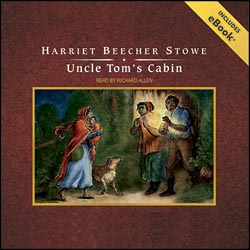
Uncle Tom's Cabin 
Author: Harriet Beecher Stowe; Reader: Richard Allen
(Audiobook - 2008; Original Book - 1852)
Uncle Tom's Cabin is one of those books that's received a bad rap in modern times because of some outdated principles and characterizations that can easily come across as stereotypes (the "goblin" child in the middle of the book, for one). Indeed, an atheist or non-Christian might have just as much trouble swallowing some parts of it (especially near the end) as anyone of African-American heritage will. But generally speaking, I believe a lot of the negative rap is owed to the minstrel plays that sprung up after its publication, many of which were against Stowe's anti-slavery stance, and according to Wikipedia, more people saw the plays then read the book. I mean, seriously, WTF?! That is not what the book is like! As a result, the phrase "Uncle Tom" itself has taken on a derogatory meaning.
But one might end up with a different perspective on the character if they were to read the book. The main point is not that slaves should be dutiful to their masters. In fact, the whole entire purpose of the story is to show that you can't justify slavery, because even if slaves were to have it as good as they possibly can (not that any form of slavery is "good" in any sense, but let's face it - Uncle Tom has it about as good as was possible), horrible things can and will still happen. Tom starts out living with a very kind and generous master, but he falls on hard times and is forced to sell him. Tom lucks out and ends up with another benevolent master, but then after sudden tragedy strikes, he goes from being in the best possible situation for a slave to the worst - working for a cruel, murderous master, Simon Legree, on a cotton plantation.
Tom's dutifulness to his white masters is somewhat overstated - it's not always without purpose. When he picks enough cotton for two people, it's because he's trying to help another slave who is too ill to pick her share from being punished. This also dispels the myth that he's "lazy".
Uncle Tom's character is also balanced out with the other half of the story, which follows the odyssey of Eliza and George Harris, who actually do rebel against their masters and run away to Canada. Judging by who ends up with the happier outcome, there's probably little denying which one was better to emulate. (But Tom was older and believed he'd return to his family once they had enough money, so he didn't have as much motivation.)
It's not difficult to understand why this book was a catalyst for the Civil War. Even if some things need to be taken with a grain of salt in today's world, the characterizations are humanized and powerful. The audiobook reading, by the late Richard Allen, is perfect. He really got into the roles and brought out the passion and intensity of even the most emotional and gripping parts of the story.
Rating: 4.5/5







